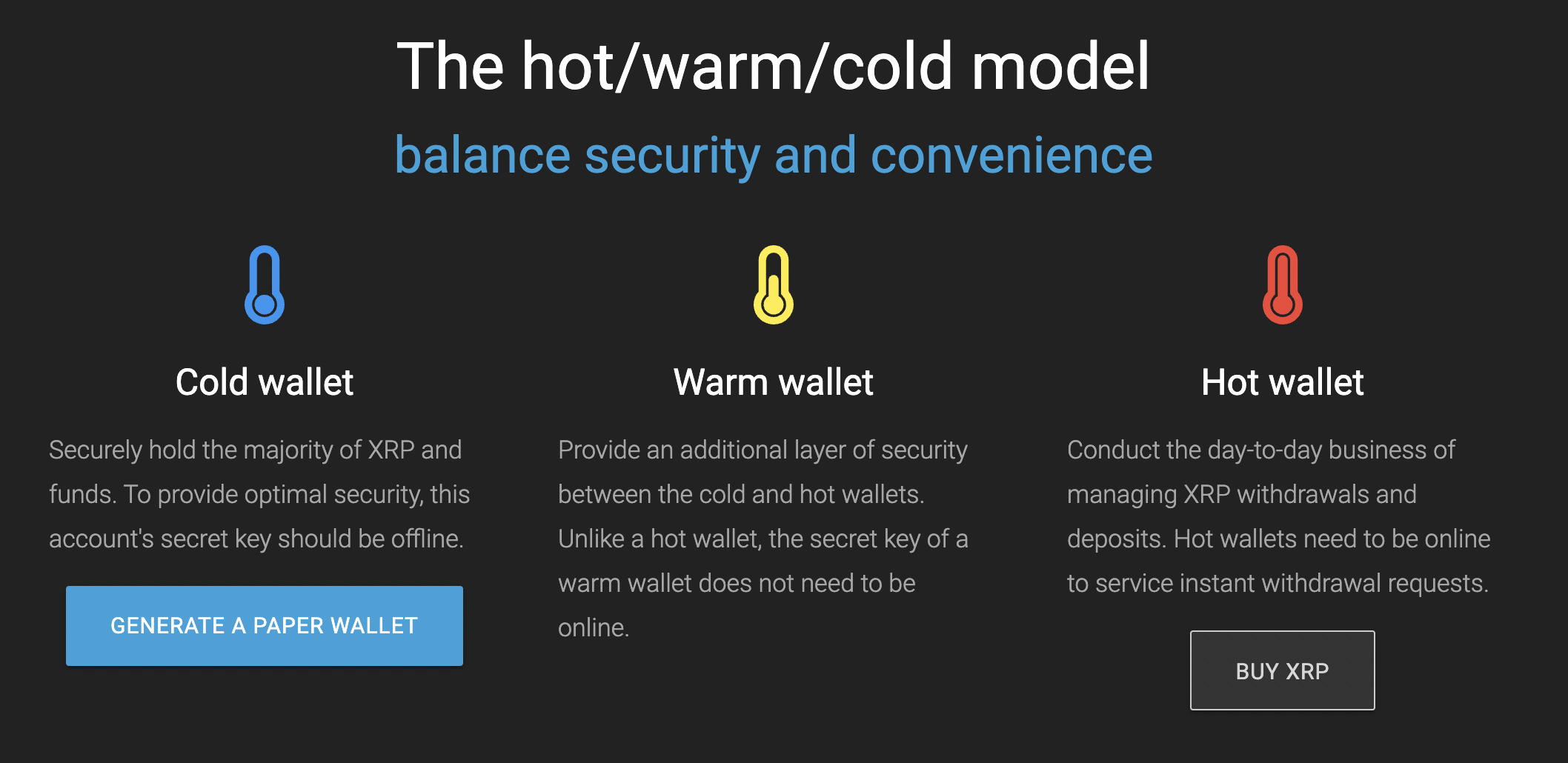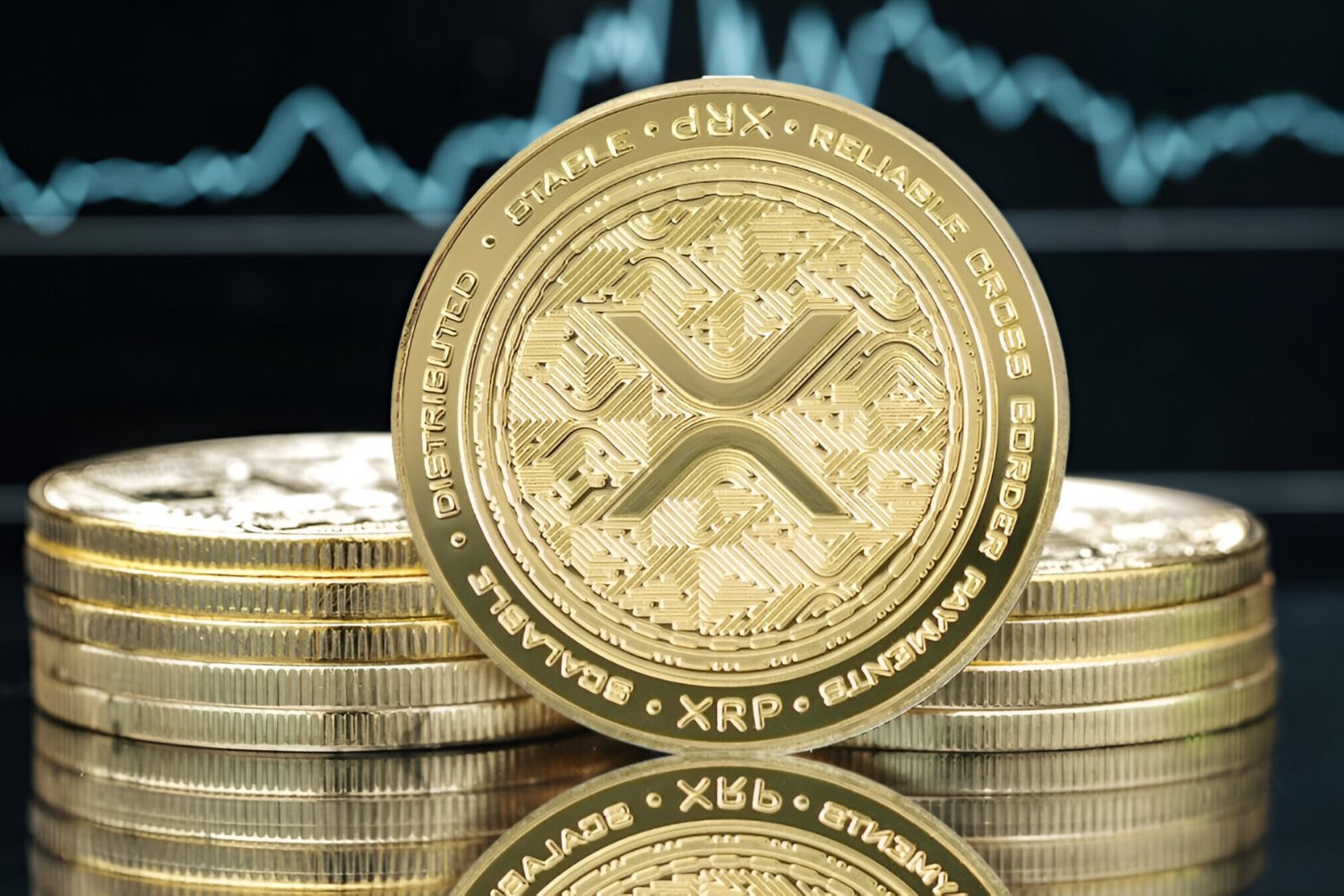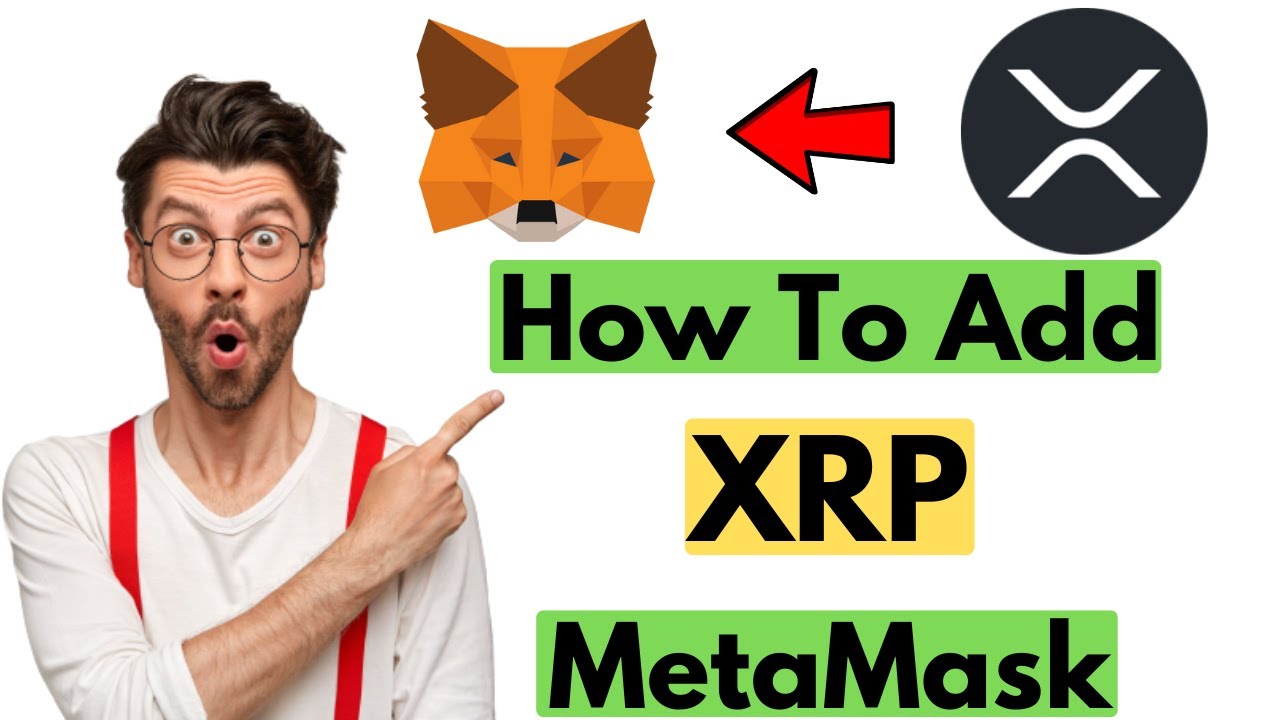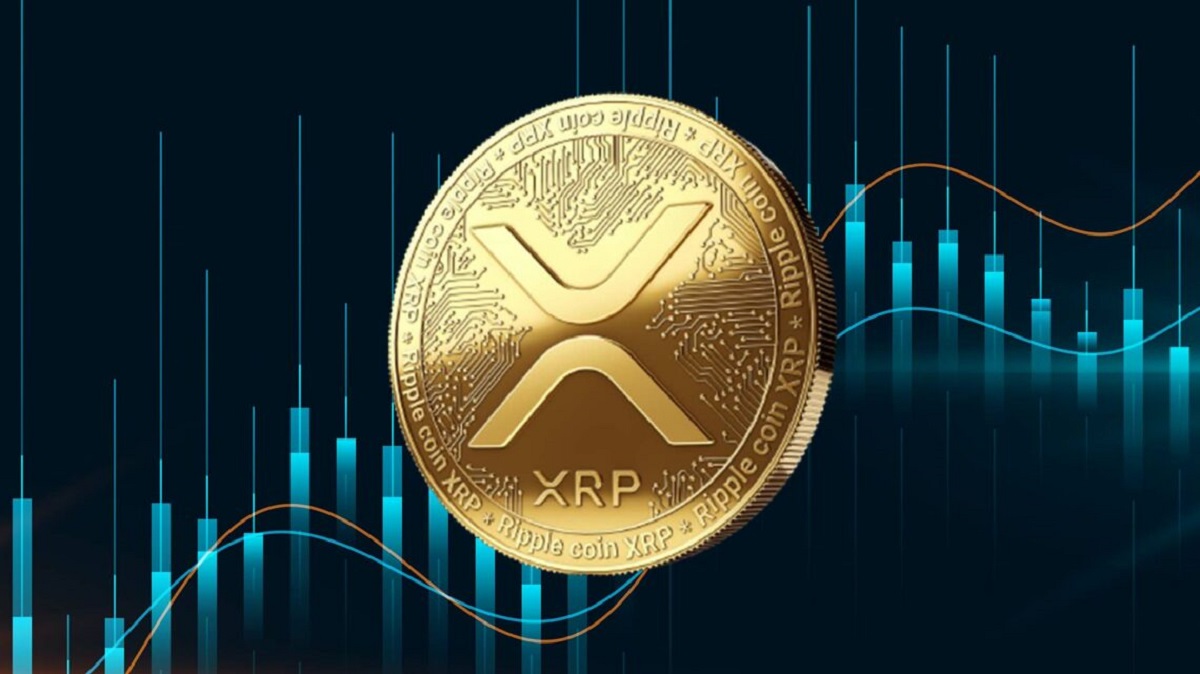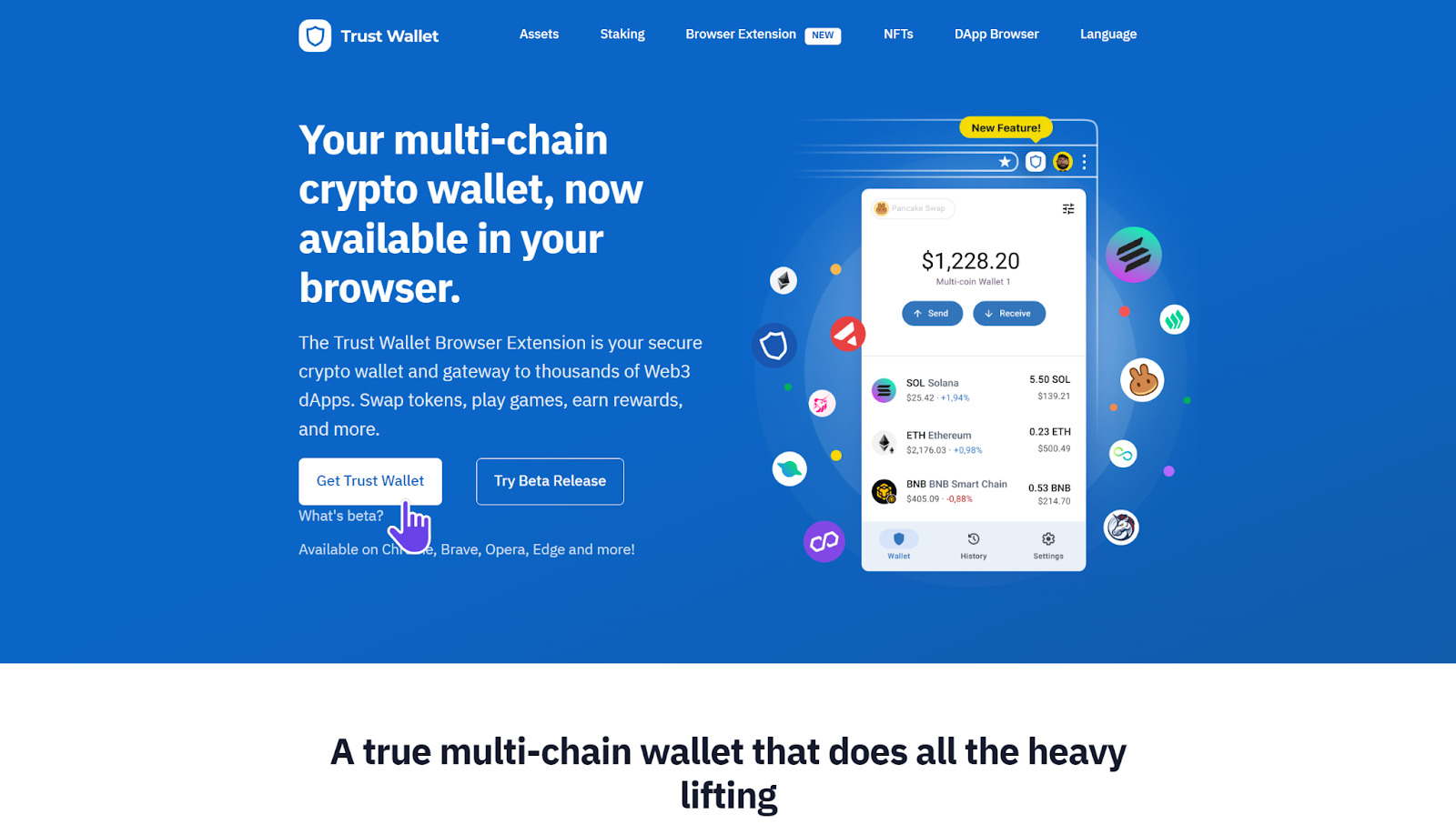The Potential of XRP
As one of the leading cryptocurrencies in the market, XRP has garnered significant attention from investors and enthusiasts alike. With its unique features and strong backing, XRP has the potential to experience substantial growth in the future.
One of the key factors contributing to the potential of XRP is its association with Ripple, a global blockchain technology company. Ripple aims to revolutionize the way cross-border payments are conducted by utilizing XRP as a bridge currency. This innovative approach has attracted partnerships with major financial institutions, enhancing XRP’s credibility and adoption.
The speed and efficiency of XRP transactions are another factor that sets it apart from other cryptocurrencies. XRP boasts quick settlement times, with transactions being confirmed in a matter of seconds. This makes it an ideal choice for cross-border payments, where speed and promptness are crucial.
Moreover, XRP’s low transaction fees add to its appeal. Traditional banking systems often impose high fees on international money transfers. XRP offers a cost-effective alternative, enabling individuals and businesses to save substantial amounts of money on transaction fees.
The scalability of XRP is another aspect that positions it for success. With the ability to handle a significantly higher volume of transactions compared to other cryptocurrencies, XRP has the capacity to meet the demands of global financial institutions and facilitate seamless cross-border transactions on a large scale.
Furthermore, Ripple’s expanding network of partnerships and collaborations with financial institutions is a testament to the growing trust in XRP. As more banks and payment providers integrate Ripple’s technology and adopt XRP, the demand for the cryptocurrency is likely to increase, potentially driving its price higher.
It is important to note that the potential of XRP is not without its challenges. The regulatory landscape surrounding cryptocurrencies is constantly evolving, and any adverse legal or regulatory developments could impact the future prospects of XRP. Additionally, competition from other cryptocurrencies and the volatility inherent in the cryptocurrency market as a whole should also be considered.
Despite these challenges, the sheer potential of XRP cannot be disregarded. With its association with Ripple, its speedy and cost-effective transactions, and its expanding network of partnerships, XRP stands poised to make a significant impact in the world of digital payments. As the cryptocurrency market continues to evolve, keeping a close eye on XRP’s development and potential growth is certainly worthwhile.
Factors Affecting XRP’s Price
The price of XRP, like any other cryptocurrency, is influenced by a variety of factors. Understanding these factors can provide valuable insights into the potential future performance of XRP and help investors make informed decisions.
Market demand and supply are among the primary factors impacting XRP’s price. When there is a high demand for XRP and limited supply available, the price tends to rise. Conversely, when the supply of XRP exceeds the demand, the price may experience downward pressure.
Adoption by financial institutions plays a crucial role in influencing XRP’s price. As more banks and payment providers integrate Ripple’s technology and utilize XRP for cross-border payments, the demand for XRP increases, which can drive its price higher. The level of adoption and integration of XRP into the traditional financial system is an important indicator to monitor when assessing its price potential.
The overall sentiment and perception of the cryptocurrency market also impact XRP’s price. Positive news, such as partnerships, collaborations, or regulatory developments favoring cryptocurrencies, can create bullish sentiment, leading to increased demand for XRP. Conversely, negative news or regulatory uncertainties can result in bearish sentiment, causing a decline in demand and a potential drop in price.
The broader market conditions and investor sentiment towards cryptocurrencies as a whole can affect XRP’s price. During periods of heightened market volatility or risk aversion, investors may shift away from cryptocurrencies, including XRP, which can put downward pressure on its price. Conversely, in times of positive market sentiment and increased interest in cryptocurrencies, XRP may experience a surge in demand and an upward price movement.
Technological advancements and updates to the Ripple network can also impact XRP’s price. Improvements in the efficiency, scalability, and security of the network can enhance confidence in XRP as a viable digital asset and contribute to an increase in price. Conversely, any technical issues or vulnerabilities within the network can create a negative perception, potentially leading to a decline in price.
Regulatory factors and legal considerations can significantly influence the price of XRP. Any changes in regulations related to cryptocurrencies, blockchain technology, or cross-border payments can impact the adoption and utility of XRP, ultimately affecting its price. Monitoring regulatory developments and their potential impact on XRP is essential for understanding its price trajectory.
In summary, factors such as market demand and supply, adoption by financial institutions, overall market sentiment, technological advancements, and regulatory factors all play crucial roles in influencing XRP’s price. By carefully considering these factors and staying informed about the latest developments, investors can gain a deeper understanding of XRP’s price potential and make informed decisions.
Ripple’s Expanding Network
Ripple, the company behind XRP, has been actively building and expanding its network of partnerships and collaborations. This concerted effort plays a crucial role in enhancing the credibility and adoption of XRP, ultimately impacting its price and potential for growth.
One of the key aspects of Ripple’s expanding network is its focus on establishing partnerships with major financial institutions. By working closely with banks and payment providers, Ripple aims to revolutionize the traditional cross-border payment system. Through its innovative solutions, Ripple offers financial institutions the opportunity to reduce costs, increase efficiency, and improve the speed of their international transactions.
As Ripple’s network continues to grow, more financial institutions are recognizing the benefits of joining the Ripple ecosystem. These institutions become part of RippleNet, a global network that enables seamless and secure cross-border transactions using the XRP cryptocurrency. The expansion of RippleNet leads to increased adoption of XRP, which, in turn, can drive the demand for the cryptocurrency and potentially boost its price.
Ripple’s partnerships extend beyond financial institutions. The company has also collaborated with various blockchain projects and payment providers to broaden the reach and utility of XRP. These collaborations enable interoperability between different blockchain networks, allowing for seamless transactions and enhancing the overall liquidity of XRP.
Furthermore, Ripple is actively working to expand its presence in different regions around the world. By establishing offices and partnerships in key financial hubs, Ripple aims to tap into new markets and leverage local expertise to drive adoption. This localized approach helps Ripple cater to the specific needs of different regions, further enhancing the value proposition of XRP.
One notable aspect of Ripple’s expanding network is its engagement with central banks. Ripple has been exploring partnerships and collaborations with several central banks to integrate its blockchain technology and XRP into the central bank’s settlement systems. Such partnerships have the potential to significantly increase the adoption and utility of XRP, as central bank involvement brings stability, credibility, and regulatory oversight to the cryptocurrency ecosystem.
It is important to note that the expansion of Ripple’s network is an ongoing process. As more financial institutions, payment providers, blockchain projects, and central banks join Ripple’s ecosystem, the reach and influence of XRP will continue to grow. The network effect created by Ripple’s expanding partnerships and collaborations bodes well for the future of XRP, enhancing its potential for widespread adoption and potential price appreciation.
Adoption by Financial Institutions
The adoption of XRP by financial institutions has been one of the key drivers behind the growth and success of Ripple and XRP. As more banks and payment providers recognize the benefits of utilizing Ripple’s technology and XRP, the adoption rate continues to increase, providing a solid foundation for XRP’s potential for future growth.
One of the primary advantages of XRP adoption for financial institutions is the ability to streamline cross-border payments. Traditional cross-border transactions are often time-consuming and costly, involving multiple intermediaries and high transaction fees. By integrating Ripple’s technology and utilizing XRP as a bridge currency, financial institutions can significantly reduce the time and costs associated with cross-border payments.
The speed and efficiency of XRP transactions make it an ideal choice for financial institutions. XRP enables near-instant settlement times, allowing for real-time transfers of value across borders. This not only enhances the customer experience but also improves overall operational efficiency for financial institutions, reducing the risk of delayed or failed transactions.
The low transaction fees associated with XRP are another compelling factor for financial institutions. Traditional banking systems often impose high fees on international money transfers, eating into the profits of both the banks and their customers. XRP transactions, on the other hand, offer a cost-effective alternative, enabling financial institutions to provide their customers with more competitive and affordable cross-border payment solutions.
The scalability of XRP is also paramount for financial institutions. As they deal with large transaction volumes, financial institutions require a cryptocurrency that can handle a high volume of transactions quickly and efficiently. XRP’s scalability allows financial institutions to process a significant number of transactions, meeting the demands of their customers without sacrificing speed or security.
Furthermore, the adoption of XRP by financial institutions helps to enhance the overall credibility and trust in the cryptocurrency. As major banks and payment providers recognize the value of XRP and incorporate it into their operations, it increases the confidence of other financial institutions and customers in utilizing the cryptocurrency for cross-border payments. This ripple effect of adoption ultimately drives the demand for XRP and has the potential to positively impact its price.
It is important to note that the adoption of XRP by financial institutions is an ongoing process. While several notable partnerships and collaborations have been established, there is still room for further growth and expansion. As more financial institutions recognize the benefits of utilizing XRP for cross-border transactions, the network effect will continue to strengthen, enhancing XRP’s position as a prominent digital asset in the financial industry.
XRP’s Role in Cross-Border Payments
XRP, the cryptocurrency associated with Ripple, plays a significant role in revolutionizing the traditional cross-border payment system. With its unique features and capabilities, XRP offers several advantages that make it an attractive choice for facilitating efficient and cost-effective cross-border transactions.
One of the primary benefits of using XRP for cross-border payments is its ability to act as a bridge currency. In traditional systems, when making international transfers, transactions often involve multiple intermediate currencies, leading to additional fees and longer settlement times. XRP serves as a neutral intermediary currency, allowing for direct transfers between two fiat currencies, eliminating the need for excessive conversions. This results in faster transaction settlement times and lower costs for cross-border payments.
The speed at which XRP transactions are processed is another crucial aspect of its role in cross-border payments. Unlike traditional banking systems that involve intermediaries and multiple layers of verification, XRP transactions can be settled quickly. On average, XRP transactions are confirmed within seconds, enabling near-instantaneous transfers of value across borders. This rapid settlement time enhances efficiency and enables businesses and individuals to conduct cross-border transactions with ease and convenience.
Furthermore, XRP offers cost savings for cross-border payments. Traditional wire transfers through banks often incur high transaction fees, especially for international transfers. In contrast, XRP transactions come with significantly lower fees, making them a more affordable option for businesses and individuals conducting cross-border transactions. These cost savings can contribute to overall efficiency and profitability, especially for businesses that rely heavily on international trade.
XRP’s liquidity also adds value to its role in cross-border payments. As a widely adopted cryptocurrency, XRP enjoys high liquidity in the market. This means that XRP can be easily converted into different fiat currencies, providing flexibility for parties involved in cross-border transactions. The availability of liquid markets reduces slippage and improves the efficiency of converting XRP into local currencies, further streamlining the cross-border payment process.
The transparency and security offered by the blockchain technology that underlies XRP also enhance its role in cross-border payments. Each transaction on the XRP ledger is recorded and verified on a transparent public ledger, ensuring accountability and reducing the risk of fraud or manipulation. The immutability of blockchain technology adds an additional layer of security, instilling trust in cross-border transactions conducted with XRP.
In summary, XRP plays a pivotal role in transforming the cross-border payment landscape. As a bridge currency, XRP facilitates faster and more cost-effective cross-border transactions by eliminating intermediaries and excessive conversions. Its speed, low transaction fees, liquidity, transparency, and security make it an attractive choice for businesses and individuals seeking efficient and seamless cross-border payment solutions. With the continued adoption and integration of XRP into the global financial system, its role in cross-border payments is set to expand even further.
Regulation and Legal Considerations
When it comes to cryptocurrencies like XRP, regulation and legal considerations play a crucial role in shaping their adoption and potential for growth. As the cryptocurrency market continues to evolve, it is important to understand the regulatory landscape and legal framework surrounding XRP to assess its future prospects.
One of the key challenges facing cryptocurrencies is the lack of clarity and consistency in regulations across different jurisdictions. Governments and regulatory bodies are still grappling with developing comprehensive frameworks to govern cryptocurrencies. The regulatory uncertainty surrounding XRP can impact its adoption and acceptance by financial institutions, as they need clear guidelines to operate within legal boundaries.
However, it is worth noting that regulatory efforts to address cryptocurrencies are underway in many countries. Some jurisdictions have implemented measures to provide legal clarity and protect investors. For example, certain countries have defined cryptocurrencies as a legal asset class, subjecting them to specific regulations and oversight. These developments provide a more structured environment for XRP and may encourage its adoption by financial institutions and investors.
Another important consideration is how regulations shape the use of XRP for cross-border transactions. Compliance with anti-money laundering (AML) and know-your-customer (KYC) regulations is essential to ensure the integrity and safety of cross-border payments. Financial institutions and businesses using XRP must adhere to these regulations when facilitating cross-border transactions, which may involve additional compliance costs and requirements.
Moreover, regulations related to securities laws can impact XRP’s status. The Securities and Exchange Commission (SEC) in the United States, for instance, has raised concerns regarding the classification of certain cryptocurrencies as securities. This scrutiny highlights the importance of regulatory compliance and the need for cryptocurrencies to meet necessary regulatory requirements to ensure their legitimacy and avoid potential legal challenges.
Understanding the legal implications surrounding XRP is crucial for both users and investors. Smart contracting, tokenization of assets, and other innovative use cases of XRP may also fall under existing legal frameworks. It is important for companies and individuals leveraging XRP for these purposes to carefully assess and comply with applicable laws and regulations.
Ultimately, the regulation and legal considerations surrounding XRP can impact its adoption by financial institutions, the level of trust from investors, and its liquidity in the market. As regulators continue to refine their approach to cryptocurrency regulation, staying informed about the changing legal landscape is essential for assessing the future potential and risks associated with XRP.
Comparison with Other Cryptocurrencies
When evaluating the potential of XRP, it is essential to compare it with other cryptocurrencies in the market. While each cryptocurrency has its unique features and value propositions, understanding how XRP compares to its peers can provide valuable insights into its strengths and potential for growth.
One key factor to consider is the purpose and use case of different cryptocurrencies. While cryptocurrencies like Bitcoin and Ethereum primarily function as digital currencies and platforms for decentralized applications, XRP’s role is focused on facilitating efficient cross-border payments. This distinction sets XRP apart and positions it as a potential solution for the global remittance industry, which represents a massive market opportunity.
Transaction speed is another aspect to compare among cryptocurrencies. While Bitcoin and Ethereum may experience confirmation times of several minutes or even hours, XRP stands out for its near-instant settlement times. This speed advantage makes XRP well-suited for time-sensitive cross-border transactions, providing a significant competitive edge for financial institutions and businesses.
Transaction fees are also important to consider when comparing cryptocurrencies. Bitcoin and Ethereum transactions can become costly, especially during periods of high network congestion. In contrast, XRP transactions generally come with much lower fees, making it an attractive option for businesses and individuals seeking cost-effective cross-border payment solutions.
Liquidity is another essential factor to evaluate. As one of the top cryptocurrencies in terms of market capitalization, XRP enjoys high liquidity. The availability of liquid markets enhances the ease of trading and converting XRP into other assets, improving its overall utility and attractiveness for investors and users.
The level of adoption by financial institutions is crucial when comparing cryptocurrencies. While Bitcoin and Ethereum are widely recognized and accepted, they have yet to penetrate the traditional financial system on a significant scale. XRP, on the other hand, has made substantial strides in securing partnerships with major financial institutions, which boosts its credibility and potential for widespread adoption.
Furthermore, the technological infrastructure behind each cryptocurrency is worth considering. XRP utilizes the RippleNet network, which offers scalable and efficient solutions for cross-border payments. This technological advantage positions XRP as a viable option for financial institutions looking to improve their international payment processes.
Regulatory compliance is an important factor to assess when comparing cryptocurrencies. XRP has been actively working with regulators to comply with legal and regulatory requirements, which enhances its adoption potential in regulated markets. This proactive approach may provide XRP with a level of regulatory clarity and support that some other cryptocurrencies may lack.
In summary, when comparing XRP to other cryptocurrencies, its focus on cross-border payments, near-instant settlement times, low transaction fees, liquidity, adoption by financial institutions, technological infrastructure, and regulatory compliance are all factors that set it apart. These unique characteristics make XRP a potential standout in the cryptocurrency market and position it as a compelling option for individuals, businesses, and financial institutions seeking efficient and cost-effective solutions for cross-border transactions.
Market Analysis and Predictions
When analyzing the market for XRP, it is important to consider various factors that can influence its price and potential for growth. While making accurate predictions in the volatile cryptocurrency market is challenging, monitoring market trends and understanding key indicators can provide valuable insights into the future prospects of XRP.
One factor to consider is the overall market sentiment towards cryptocurrencies. The cryptocurrency market is known for its volatility, and investor sentiment can have a significant impact on the price of cryptocurrencies, including XRP. Positive market sentiment, driven by factors such as regulatory developments, partnerships, and technological advancements, can contribute to increased demand, potentially driving the price higher. On the other hand, negative sentiment or market downturns can result in price declines.
The level of adoption by financial institutions is another important aspect to analyze. As more banks and payment providers integrate Ripple’s technology and utilize XRP, it can further enhance its credibility and potential for widespread acceptance. Increasing adoption by financial institutions can lead to a surge in demand for XRP, potentially driving its price higher.
Monitoring the overall growth and expansion of Ripple’s network is also crucial in market analysis. As Ripple continues to establish partnerships and collaborate with various institutions, it solidifies its position as a leading blockchain technology company. The expansion of its network contributes to increasing market confidence in XRP and can positively impact its price and market trajectory.
Additionally, regulatory developments and legal considerations can significantly influence the market for XRP. Changes in regulations related to cryptocurrencies, blockchain technology, and cross-border payments can impact the adoption and utility of XRP, thereby affecting its price. Monitoring regulatory developments and their potential impact on XRP is essential for understanding its market outlook.
Analysts and experts often provide predictions and price targets for cryptocurrencies, including XRP. These predictions are based on a variety of factors, including market trends, technical analysis, and fundamental analysis. While these predictions can be informative, it is important to exercise caution and recognize the inherent volatility and unpredictability of the cryptocurrency market.
It is worth noting that cryptocurrency markets are influenced by a multitude of factors, both within and outside the control of market participants. External factors such as global economic conditions, geopolitical events, and technological advancements can all impact the market for XRP and other cryptocurrencies in significant ways.
Ultimately, investing in cryptocurrencies, including XRP, involves inherent risks due to the volatile nature of the market. Conducting thorough market analysis, staying informed about relevant news and developments, and understanding the factors that can influence the price of XRP are essential for making informed investment decisions.









